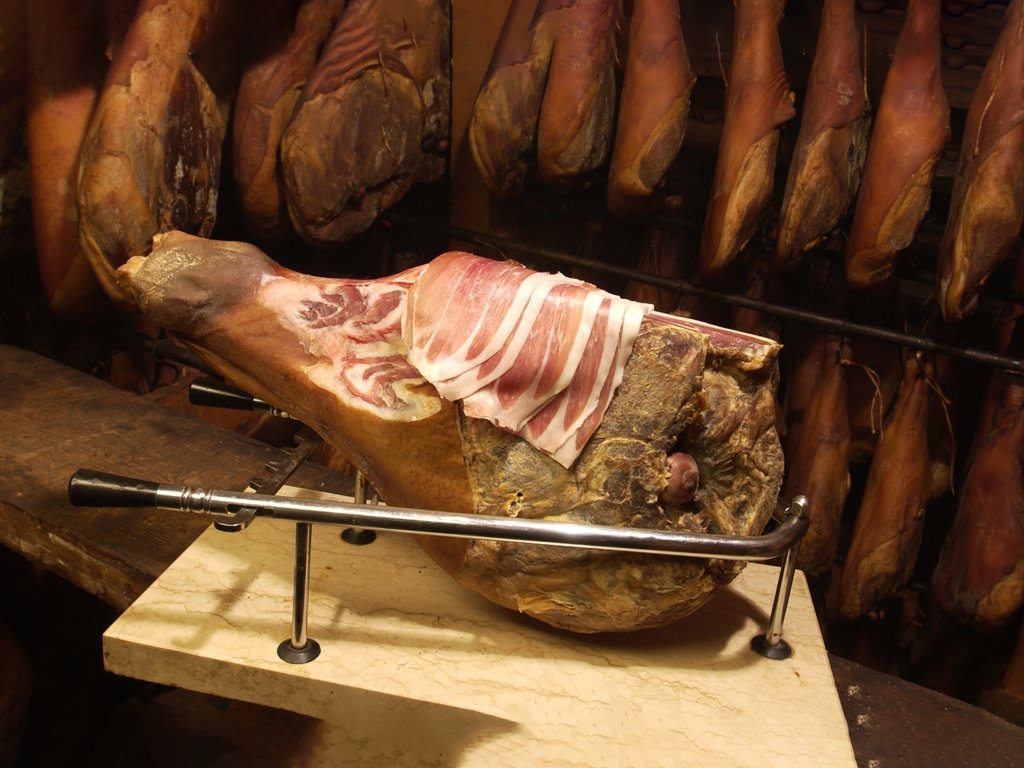When it comes to Montenegrin cuisine, one of the first delicacies that comes to mind is pršut – a true culinary symbol of the country. This dry-cured pork ham, made using traditional methods, has long been loved not only by locals but also by visitors from around the world. Its rich, salty, and smoky flavor is unforgettable, leaving a lasting impression on anyone who tries it.
What Is Pršut?
Pršut is a traditional Montenegrin dry-cured pork ham, prepared through a lengthy process of salting, pressing, smoking, and air-drying in the fresh mountain air. The most famous pršut comes from the village of Njeguši, located on the slopes of Mount Lovćen. The unique microclimate of Njeguši, where the sea breeze from the Adriatic meets the fresh mountain air, gives the pršut its distinct and exceptional flavor.
How Is Pršut Made?
The preparation of Montenegrin pršut takes 12 to 18 months and includes several key stages:
1️⃣ Salting — The fresh pork leg is rubbed with coarse sea salt and left to cure for several weeks. The salt enhances the flavor and preserves the meat.
2️⃣ Pressing — After salting, the ham is placed under a heavy press to remove excess moisture.
3️⃣ Smoking — The meat is slowly smoked for several months over oak and beech wood, giving it a characteristic smoky aroma.
4️⃣ Air-drying — The final step is drying the ham in the fresh mountain air. The natural temperature and humidity levels in Njeguši are crucial for achieving the perfect texture and flavor.
Why Njeguši?
Njeguši is considered the historical heart of pršut production. This small mountain village, located at an altitude of 900 meters above sea level, is situated in the Lovćen National Park.
The unique climate of Njeguši is perfect for curing pršut: cold and dry winters and cool summers allow the ham to mature slowly, absorbing the aromas of mountain herbs and wood smoke.
The tradition of pršut production in Njeguši goes back centuries and is passed down from generation to generation. Today, Njeguški pršut is recognized as a cultural heritage of Montenegro.
How Is Pršut Served?
Montenegrin pršut is most commonly served as an appetizer, paired with other traditional foods. It is thinly sliced and served with:
✅ Homemade cheese — especially kajmak or local goat cheese.
✅ Olives and wine — pršut pairs perfectly with Montenegrin wines, especially Vranac.
✅ Traditional bread or polenta — such as kacamak or cornbread.
Pršut is also used in salads, pasta dishes, sandwiches, or as a filling for pita, a traditional pastry.
Pršut and Montenegrin Wine
One of the best culinary pairings in Montenegro is pršut with a glass of local wine. It pairs especially well with Vranac, a red dry wine made from an indigenous grape variety. Its rich taste and slight acidity perfectly complement the smoky and salty flavor of pršut.
Where to Try and Buy Pršut in Montenegro?
If you’re traveling around Montenegro, make sure to try pršut at local markets and restaurants in the following places:
- Njeguši — the birthplace of Montenegrin pršut.
- Kotor — a historic town with numerous restaurants and shops.
- Cetinje — Montenegro’s former royal capital, near Njeguši.
- Budva and Tivat — popular coastal towns where local delicacies are widely available.
Don’t forget to buy vacuum-packed pršut to take home as a delicious souvenir!
Interesting Facts About Pršut:
- Njeguški pršut holds an important place in Montenegrin cuisine and is protected as a cultural heritage product.
- Montenegrin pršut is considered one of the best dry-cured hams in Europe due to its unique preparation method.
- Njeguši hosts an annual pršut festival, where visitors can sample different types of this delicious ham.
Pršut — The Taste of Montenegro in Every Bite
Montenegrin pršut is more than just dry-cured meat; it’s a piece of Montenegro’s history and culture. Its rich flavor tells the story of Lovćen’s mountain winds, the salty air of the Adriatic, and centuries-old traditions.
Visiting Montenegro and not trying pršut is like missing out on seeing the Bay of Kotor. This delicacy is a must-try and a true taste of Montenegro that will stay with you long after your trip.






